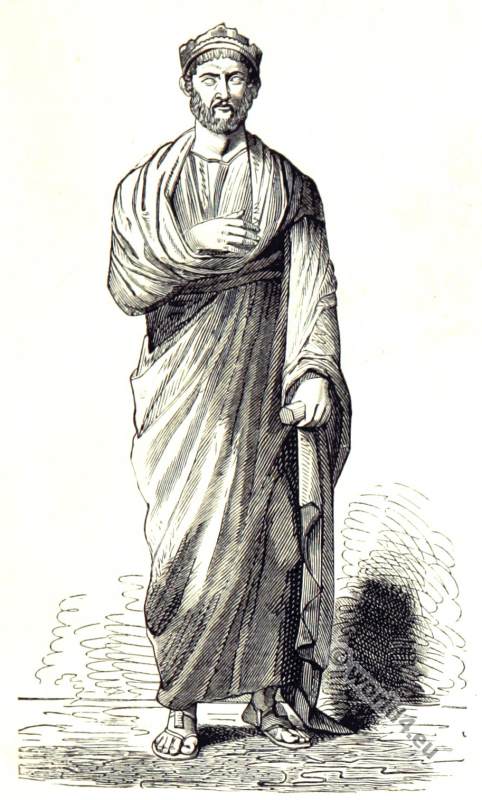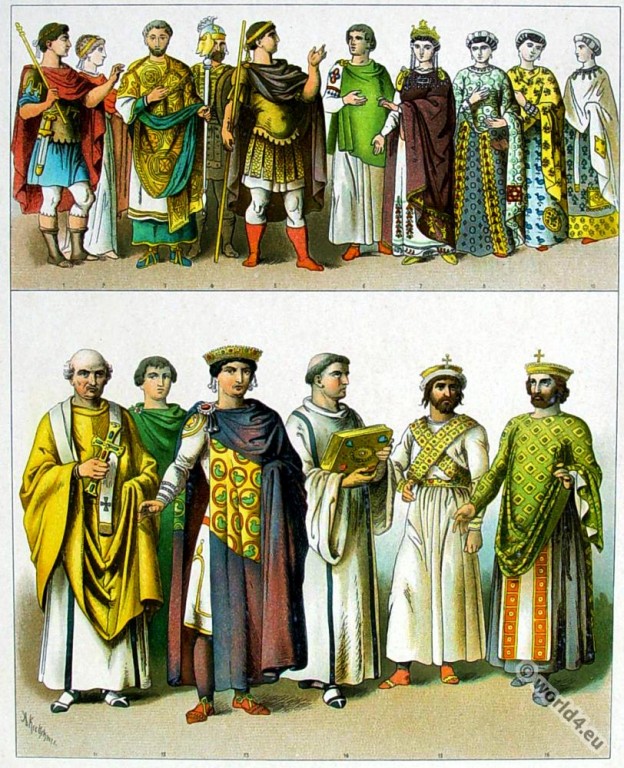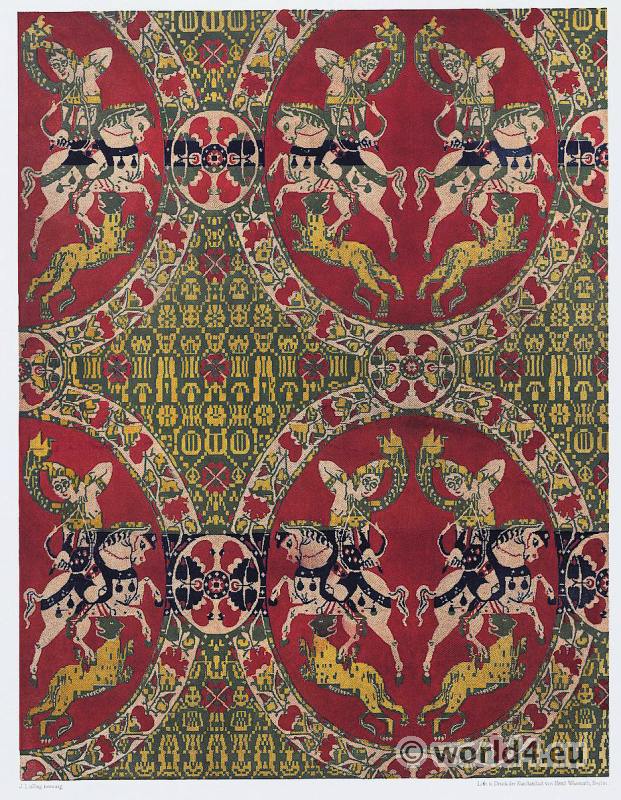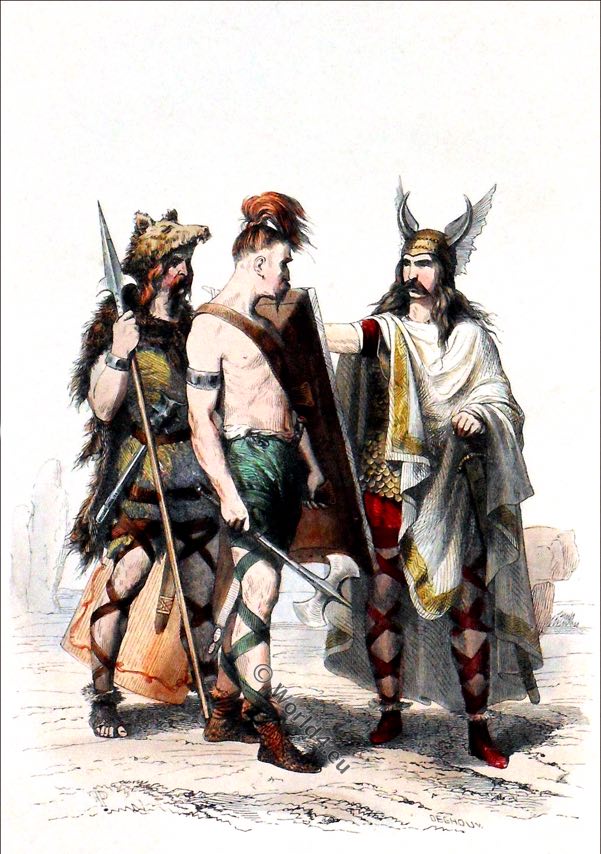Statue of Roman Emperor Julian in 360. Julian in 360 proclaims at the Palais des Thermes. Was found in 1850. Statue de l’empereur Julien, proclame en 360 au palais des Thermes.… Read More
Tag: Byzantine fashion era
Medieval Byzantine fashion and costume era.
Merovingian queen costume from the 5th to the 8th century.
Merovingian queen costume from the fifth to the eighth century.
Byzantine empire costumes, 300-700 A.D.
Theodosius I also known as Theodosius the Great, Justinian I, Theodora, Byzantine empress a.o.
Byzantine silk fabric. The mantle of St. Fridolin. 4th to 8th century.
The pattern shows a transformation of a Sassanid pattern of VI-VII. Century. The fabric itself belongs to the Byzantine period of the VII.-VIII. Century.
Byzantine silk fabrics. 6th to 7th c.
Sasanian type stylized flower. The Riders are in the late Roman costume.
Frankish Merovingian costume history 4th and 5th century.
The Nobility. State Costume — Men 6th, 7th and 8th Centuries. Goldsmiths’ Work. Costume of the Middle Classes Men. Lower Classes. The Glove. Costume of the Nobility Women. Jewellery of the Franks.
Viking of the Varangian Guard. Byzantine. Imperial bodyguard.
At the end of the tenth century the Varangian Guard, an Imperial bodyguard, were a conspicuous, picturesque, and useful adjunct to the Byzantine Court.
Clothing of the late antiquity and middle ages. 5th to 10th c.
Clothing of the late antiquity and Middle Ages. Carolingian, Eastern Roman Empire, Byzantium, Pre-Christian time.
Byzantine Empire. Dresses 6th century. The Byzantine Empress.
Costumes of the Byzantine Empire. First half of the VI. Century. The dress of the Byzantine Empress. Byzantine Empire Royalty.
Medieval Byzantine costumes 6th Century.
Clothes on Byzantine imperial court. Empress Theodora and Entourage. Emperor Justinian.










